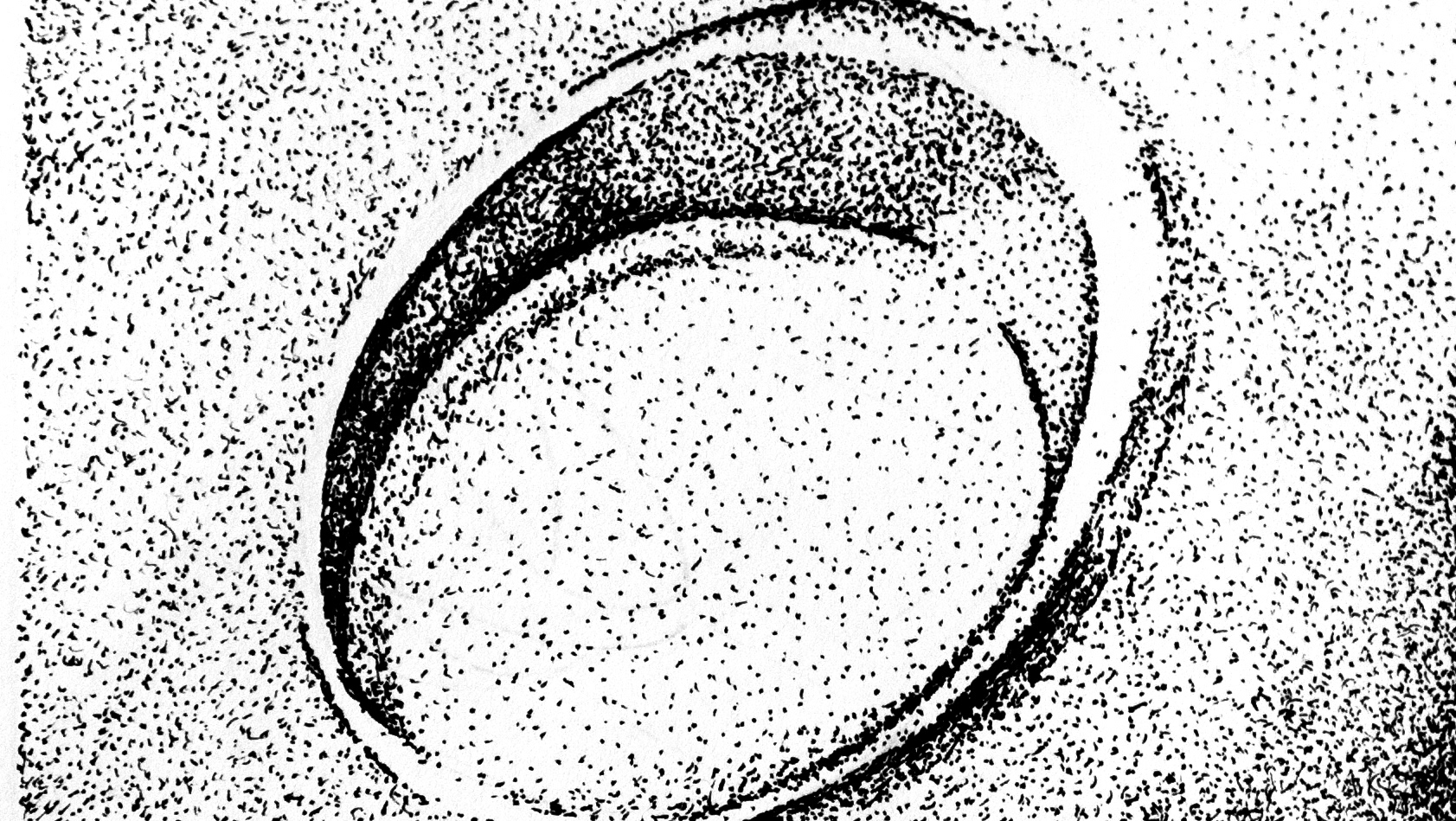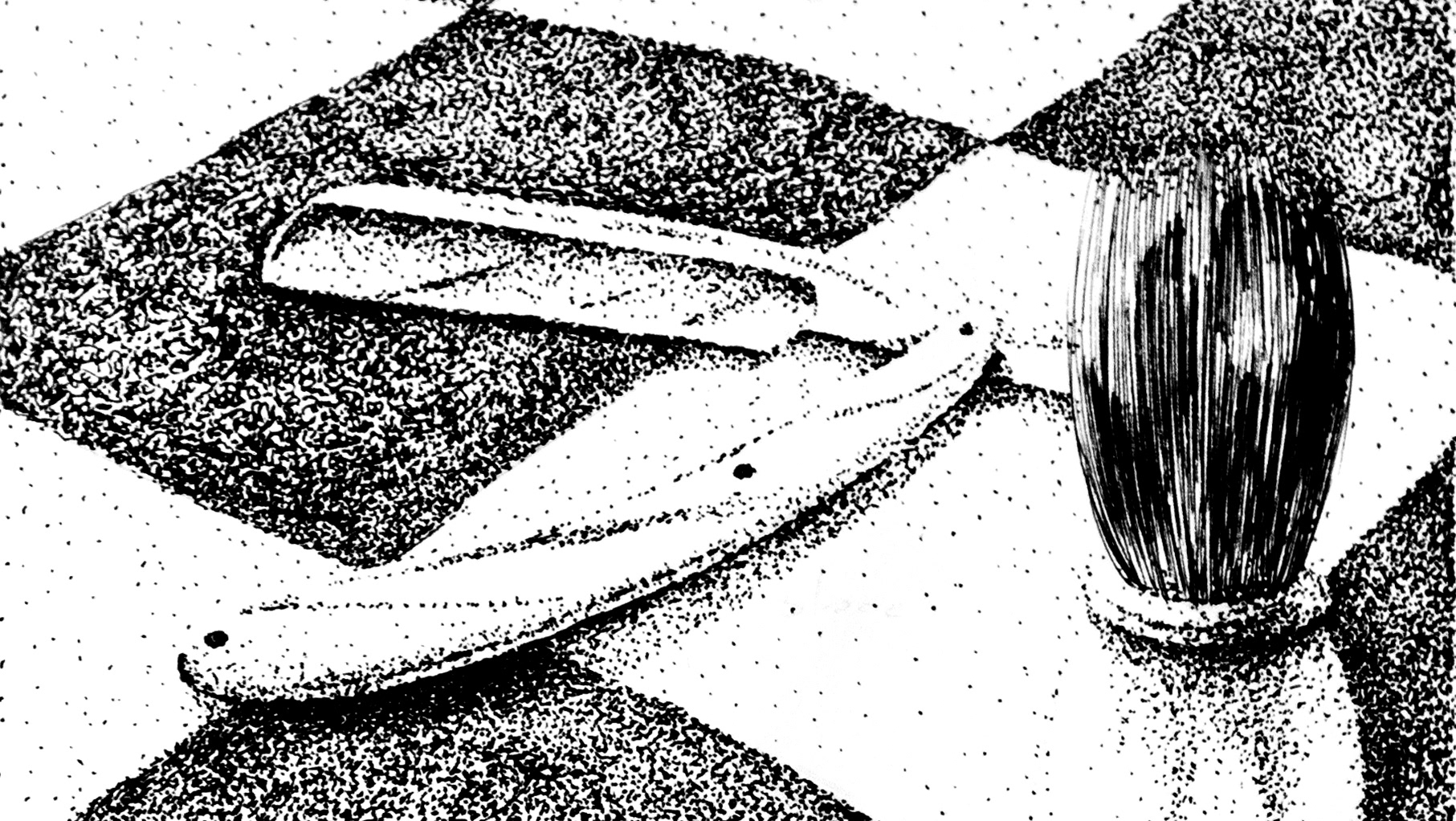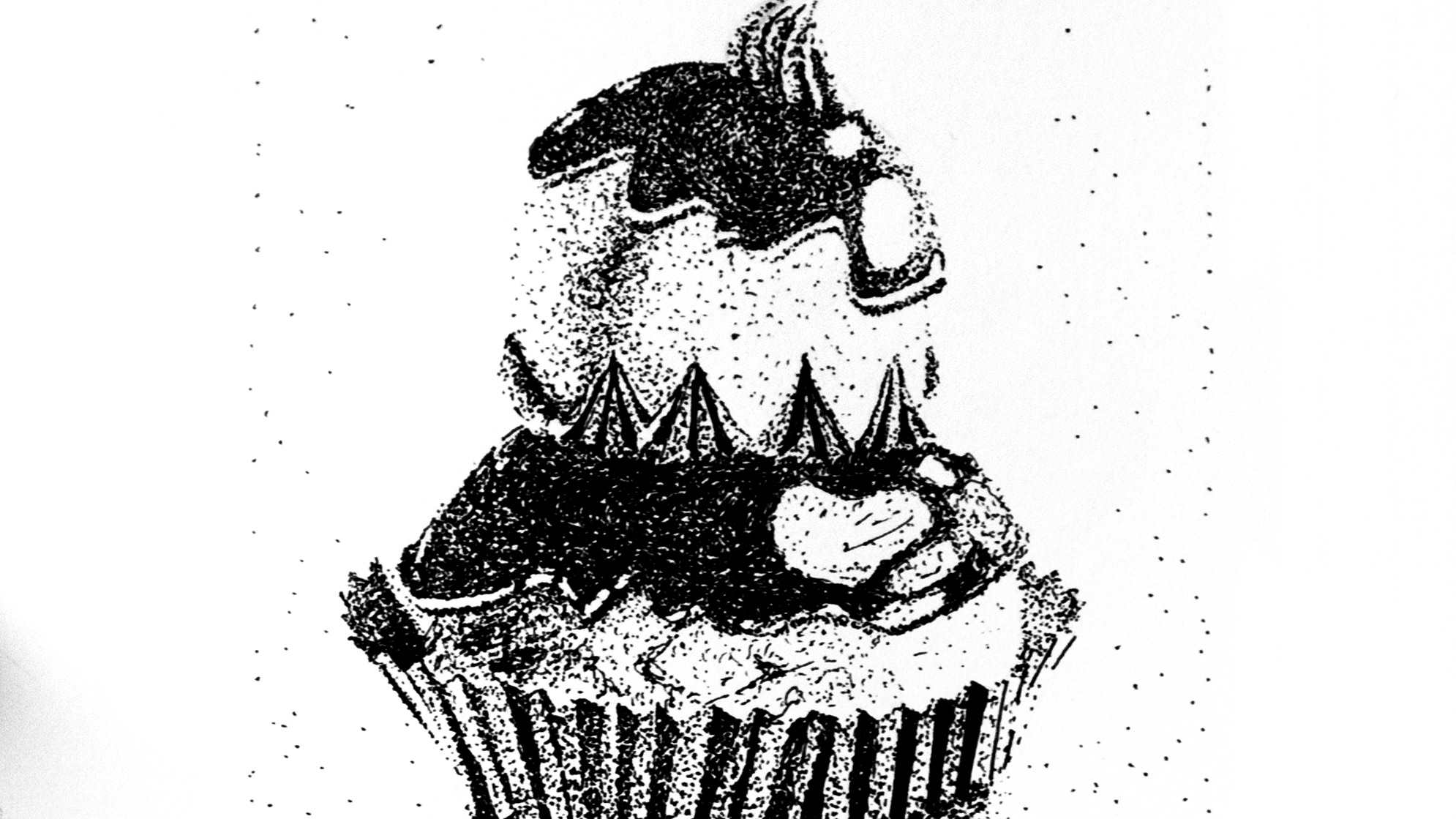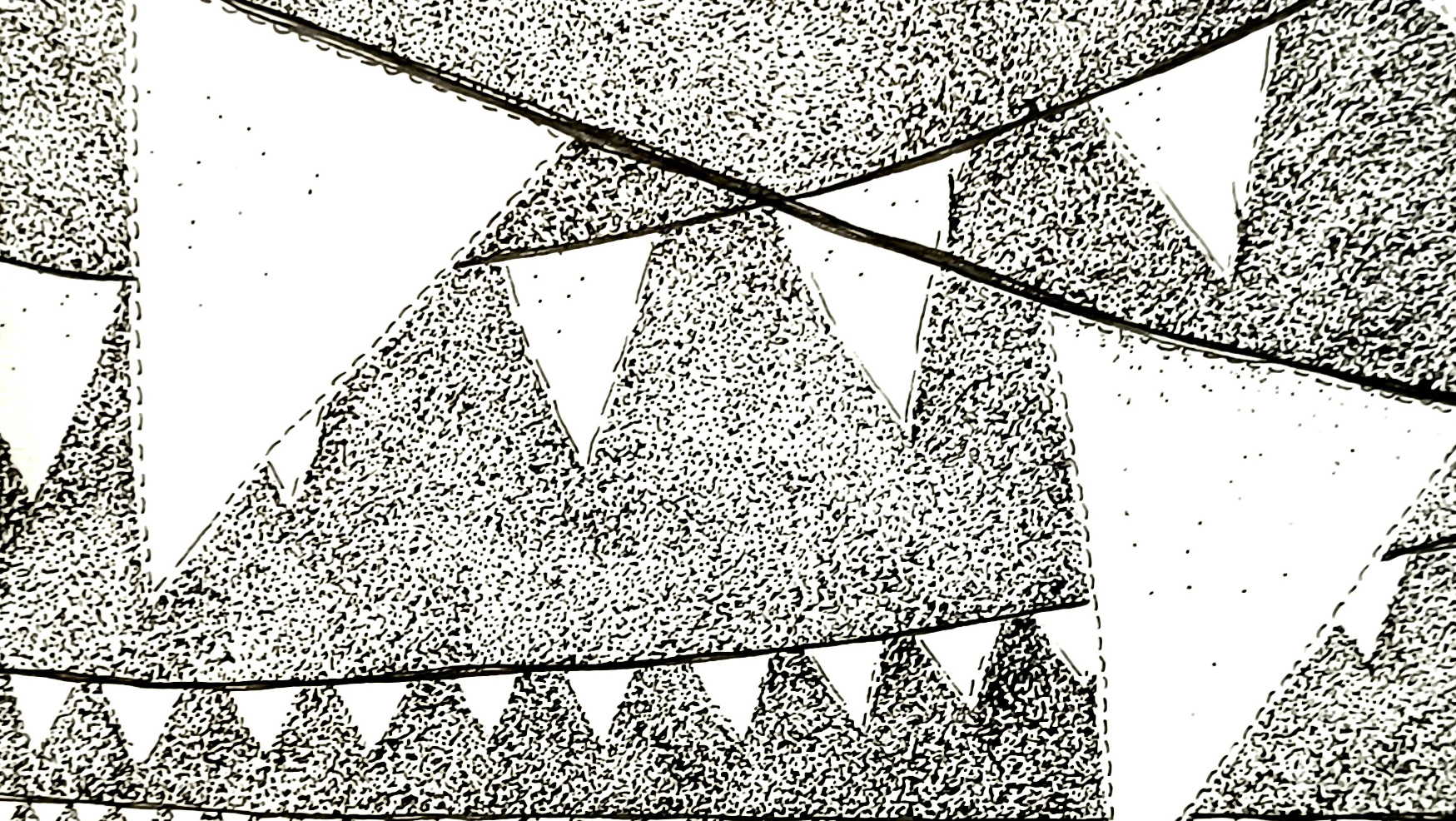Today is a day in late april 1943, and Claudine Guerin will soon turn 18, on the first of May. But she is exhausted, she needs to visit the Revier. She isn't so concerned about joining the revier, she had been there once, and she survived. Yet this time is different, this time she didn't warn the other 31000.
Back in December 1941, Claudine was 16 and studied in a high school in Paris. On the first of December, her mother was arrested by the police for communist activities. Claudine was distraught, her father had already been a prisoner in Germany, her mother was all she had left. Now, she was alone.
She kept on going to school, it was a good cover for meeting with her second family, the resistance. At only 16, she was already transporting tracts, papers, the police doesn't suspect a 17 years old as much as an adult.
Yet Claudine's name came out during the Pican investigation. Andre and Germaine Pican were long time family friends. and Claudine wrote a letter to them which was found by the police. Claudine was arrested along with them, Mai and Georges Politzer, Charlotte Delbo and Georges Dudach, Danielle Casanova, the Solomons, Marie - Claude Vaillant Couturier, and so many more.
To make matters worse, the police came to arrest Claudine directly at her school. It was a truly odd moment. She expected the other teenagers to do something, to help her, none of that happened, she felt judged, the director of the school told her that if she was to be released, she would not be welcomed anymore.
So Claudine went to jail, was interrogated, beaten, she said nothing, gave nothing away. She was in a single jail, on her own. After a while she learned to communicate with the other prisoners through the pipe system, she learned to know more about her new family, those who would become like her the 31000.
She also learned to listen to all the different sounds of a prison. The boots of the guards, the confused walk of the new prisoners, the dragging of the tortured, and finally the confident walk of the men who were about to get shot. When they heard that walk, she along with the other women would sing, to pay their respects, to give energy.
Even in prison, Claudine wanted to keep a high spirit, learn, live, love. She met a boy, they fell in love, they talked about the future, what they would do once they were free. They never met, they only talked through a pipe, got to know each other this way. One day, he disappeared, never to be seen again, the last thing she heard was that infamous confident walk of a man on his way to execution. The women sang once more, Claudine learnt heartbreak and loss in prison.
Her family was with her though, the 31000. On the first of May 1942, all the women started singing at the windows of the prison, they sang because it was Claudine's birthday, she turned 17. Like Rosa Floch and Simone Sampaix, Claudine was the youngest of the group, they were treated like if they were the 31000's daughters.
In August, Claudine and the others were transferred in Romainville. It was still a camp yet now they weren't in separate cells anymore. Claudine could assist to the many classes, french, maths, geography, history, english, german,... She didn't want to be too late in her studies, she wanted to join university as soon as possible once out of Romainville. To the 31000, Claudine was a cheerful girl, nothing could break her spirit.
Birkenau was a true shock, yet the 31000 shielded Claudine and the youngest women as best they could. When typhus appeared in the camp, Claudine was infected, she had no choice but going to the Revier, but she had warned the 31000. They came to visit her whenever possible, so did Danielle Casanova, finding any medicine she could for her and the others.
Claudine survived, she left the Revier, cured of typhus, sick with dysentery. She couldn't bear seeing Rosa Floch dying, the young Rosa, arrested for writing "Long live England" on a wall near her high school. This is the only reason why she was in Birkenau, and now she was dying and was sent to the crematorium. At that point, all the 31000 knew the true purpose of the crematoriums, those were factories of mass murder, designed to kill entire populations, relentlessly.
Birkenau ended up breaking her spirit. Still sick, weaker and weaker, Claudine lost her optimism, she lost hope, she lost her will. This is no place for anybody, certainly no place for a 17 years old.
Back to the present, she is back at the Revier. This time, she didn't warn anybody, the 31000 have no idea where she is, they can't shield her from anything. Germaine Pican is particularly affected, Claudine couldn't possibly have disappeared, she would have told her, she was always around, Germaine feels responsible, there is nothing she could do.
Claudine is all alone, surrounded by prisoners she doesn't know, speaking a language she doesn't understand. She asks for help, but she is so weak she can't be heard.
She fades away slowly, painfully. In a few more days, she would have celebrated her 18th birthday.
Notes
Thank you for listening to this episode of 31000/45000, the story of 2 trains of french members of the resistance. My name is Matthieu Landour Engel.
This episode was about Claudine Guerin and the youngests among the 31000.
Life in Birkenau was incredibly difficult, and the younger prisoners, being in better health, tended to survive slightly better than the older prisoners. Among the 31000, none of the prisoners aged 45 and more survived, the younger ones simply hzd slightly better odds. But that didn't mean their odds were high, and in the case of women like Claudine Guerin or Rosa Floch, it wasn't enough, they did not survive.
The odds for even younger prisoners, I mean teenagers or younger, were very low in Auschwitz-Birkenau. Out of the 232000 children, up to the age of 18, who arrived by train, only slightly more than 23000 were registered, the other 90% were sent to the gas chambers pretty much right away. Many were part of the evacuations, around 700 remained, alive, when Auschwitz was freed.
A significant number of children were also used for the experimental programs led by nazi physicists, the most notable being dr Joseph Mengele. I will explain this further in another episode.
I read that there were around 700 births in Auschwitz Birkenau, and, as I was reviewed by the museum of Auscwitz, I received very interesting informations regarding this matter. According to the notes I received, it seems impossible to establish the total number of children born in Auschwitz since not all of the children born in the camp were noted in the official records and due to the destroyed and incomplete documentation. Although until November 1944 Jewish infants were killed immediately after birth and never registered as prisoners in camp records, for the unknown reasons, eight Jewish infants were registered and assigned prisoner numbers in 1944. The first such case was noted on February 21, 1944.
Jewish children born in the family camp for prisoners from Theresienstadt were not put to death immediately, however, they all perished during the liquidation of the family camp. There is no exact number of children born there, nor the official camp records included children born to the Jewish women confined in the transit camp (BIIc, BIII). On the other hand, the Sinti and Roma children were noted in the records and 378 births were noted there.
According to available documents of KL Auschwitz and the documents regarding liberation of the camp, there were 680 child-prisoners who were born in KL Auschwitz II-Birkenau, Frauenlager or Zigeunerlager. Eight of them were released with from the camp along with their mothers. Only 46 survived until the liberation of the camp, of whom several died afterwards in the Polish Red Cross hospital on the grounds of the former camp or in Brzeszcze.
I have been trying to find Claudine Guerin’s relatives, unfortunately, my research was unsuccessful. If by any chance, you know of someone related to her please let me know, I would be very pleased to get in touch and make sure the text I wrote doesn’t contain any errors.
My sources for this story mostly come from the book le convoi du 24 janvier by Charlotte Delbo, A train in winter by Caroline Moorehead. My sources also are red triangles in Auschwitz, by Claudine Cardon Hamet, the website deportes-politiques-auschwitz.fr, memoire vive and the foundation for the memory of deportation website and the fantastic website auschwitz.org .
Thank you very much for listening, the next episode will be about Danielle Casanova’s importance to the 31000 and the typhus spread.
TRADUCTION FRANCAISE
Aujourd’hui, un jour de fin avril 1943, Claudine Guerin a bientôt 18 ans, le 1er mai. Elle est un peu plus fatiguée que d’habitude, alors elle se rend au revier. Ca ne l’inquiète pas plus que çà, elle s’y est déjà rendue, elle y a survécu. Mais cette fois-ci est différente, cette fois-ci elle n’a pas prévenu les 31000.
Plus tôt, en décembre 1941, Claudine avait 16 ans et étudiait dans un lycée à Paris. Le 1er décembre, sa mère était arretée pour activités communistes. Claudine était confuse, son père était déjà loin, prisonnier en Allemagne, sa mère était tout ce qui lui restait. Elle était seule.
Elle continuait d'aller aux cours, c'était une bonne couverture pour cacher ses rendez vous avec sa nouvelle famille, la résistance. A un si jeune âge, elle avait pourtant déjà beaucoup de responsabilités, elle transportait des tracts, du matériel, et la police ne suspectait pas autant une adolescente qu’une adulte.
Mais le nom de Claudine était apparu pendant l’affaire Pican. André et Germaine Pican étaient des amis de la famille, et Claudine avait écrit une lettre trouvée par les autorités. Claudine était arrêtée avec un groupe entier, les Pican, les Politzer, Charlotte Delbo et Georges Dudach, Danielle Casanova, les Solomons, Marie-Claude Vaillant Couturier, et tant d’autres.
Claudine était arrêtée à son lycée, devant tout le monde. Claudine espérait que les autres élèves réagiraient, mais rien ne se passait. Pire, elle se sentait jugée par ses camarades de classe et le directeur de l'école lui ordonnait même de ne jamais revenir, elle n'était plus la bienvenue.
Claudine allait en prison, elle était interrogée, violentée, elle ne disait rien. Sa cellule était petite, elle était seule, de nouveau. Mais elle apprenait vite à communiquer avec les autres prisonnières via la tuyauterie, elle reprenait contact avec sa famille, faisait la connaissance d’autres membres, celles qui bientôt devenaient les 31000.
Elle apprenait à reconnaître les sons d’une prison, les bottes de gardes, la marche confuse d’un nouveau prisonnier, les trainages des tortures, et aussi la marche assurée de ceux qui vont au peloton d'exécution. Cette marche là, dès que les femmes l’entendaient, elles se mettaient à chanter, pour honorer le héros de la résistance, pour donner du cœur.
Même en prison, Claudine gardait un moral d’acier, elle voulait apprendre, vivre, aimer même. Elle rencontrait un garçon, ils tombaient amoureux, parlaient du futur, de ce qu’ils accompliraient à l'extérieur. Ils ne s'étaient pourtant jamais vus en face. Ils ne pouvaient se parler qu'à travers les tuyauteries, mais ils apprenaient à se connaitre tout de même. Un jour, il n'était plus là, le dernier son que Claudine entendait à son propos était cette marche confiante, haute, d’un homme en chemin vers le peloton. Les femmes chantaient une fois de plus, Claudine apprenait la signification d'un cœur brisé.
Sa famille, les 31000, étaient avec elle tout du long. Le 1er mai 1942, elle chantaient à travers les tuyaux pour elle, pour lui souhaiter son anniversaire, ses 17 ans. Comme Rosa Floch et Simone Sampaix, Claudine était parmi les plus jeunes des 31000, elles étaient traitées comme les filles des 31000, elles étaient protégées.
En août, Claudine et les autres étaient transférées à Romainville. Un autre camp, un fort, mais plus de cellules séparées. La bas, Claudine assistait à des cours de français, de mathématiques, histoire, anglais, allemand, …. Elle avait bien l’intention de rattraper son retard, de rentrer à l'université aussi tôt que possible. Pour les 31000, Claudine était une jeune fille joyeuse, au caractère d’acier, rien ne pouvait la briser.
Birkenau pouvait briser toute personnalité, heureusement les 31000 protégeaient Claudine et les plus jeunes autant que possible. Quand le typhus faisait sa sinistre apparition dans le camp, Claudine l’attrapait et se rendait au Revier. Elle avait prévenu toutes les femmes, elles lui rendaient visite dès qu'elles pouvaient. Même Danielle Casanova était aux aguets, elle récupérait tous les médicaments qu’elle pouvait et se rendait au chevet de Claudine et des autres.
Claudine survivait le revier, guérie du typhus, mais rattrapée par la dysenterie. Elle ne voulait pas rester là-bas plus longtemps, elle avait vu Rosa Floch mourir, la plus jeune de toutes, arrêtée pour avoir inscrit “Vive l’Angleterre” contre un mur de son lycée. Il avait suffi de cela pour son arrestation, pour sa déportation, et maintenant elle était envoyée dans un four crématoire. Toutes les 31000 savaient pour les fours crématoires, il n’y avait pas de doute, ce camp était une fabrique de mort à grande échelle, conçue pour exterminer des populations entières, de jour comme de nuit.
Claudine quittait le revier, choquée, elle avait perdu son optimisme, son espoir de rentrer, sa volonté. Ce n’est pas un lieu pour qui que ce soit, certainement pas pour des enfants. Et il y avait tant d’enfants.
De retour au présent, Claudine retourne au Revier. Cette fois-ci, elle n’a pas pris la peine de prévenir les autres 31000, elle ne sera pas protégée. Les 31000 l’ont perdu de vue, elles ne savent plus où elle se trouve, Germaine Pican est particulièrement affectée. Elle se sent responsable, mais elle ne peut rien faire.
Claudine est seule, entourée de prisonnières qu’elle ne connaît pas, qui parlent des langues qu’elle ne comprend pas. Elle demande de l’aide, mais elle est si faible que personne ne l’entend, ses cris ne sont plus que des murmures.
Claudine s'éteint dans la confusion et la douleur. Dans quelques jours, elle aurait fêté ses 18 ans.
Notes
Thank you for listening to this episode of 31000/45000, the story of 2 trains of french members of the resistance. My name is Matthieu Landour Engel.
This episode was about Claudine Guerin and the youngests among the 31000.
Life in Birkenau was incredibly difficult, and the younger prisoners, being in better health, tended to survive slightly better than the older prisoners. Among the 31000, none of the prisoners aged 45 and more survived, the younger ones simply hzd slightly better odds. But that didn't mean their odds were high, and in the case of women like Claudine Guerin or Rosa Floch, it wasn't enough, they did not survive.
The odds for even younger prisoners, I mean teenagers or younger, were very low in Auschwitz-Birkenau. Out of the 232000 children, up to the age of 18, who arrived by train, only slightly more than 23000 were registered, the other 90% were sent to the gas chambers pretty much right away. Many were part of the evacuations, around 700 remained, alive, when Auschwitz was freed.
A significant number of children were also used for the experimental programs led by nazi physicists, the most notable being dr Joseph Mengele. I will explain this further in another episode.
I read that here were around 700 births in Auschwitz Birkenau, and, as I was reviewed by the museum of Auscwitz, I received very interesting informations regarding this matter. According to the notes I received, it seems impossible to establish the total number of children born in Auschwitz since not all of the children born in the camp were noted in the official records and due to the destroyed and incomplete documentation. Although until November 1944 Jewish infants were killed immediately after birth and never registered as prisoners in camp records, for the unknown reasons, eight Jewish infants were registered and assigned prisoner numbers in 1944. The first such case was noted on February 21, 1944.
Jewish children born in the family camp for prisoners from Theresienstadt were not put to death immediately, however, they all perished during the liquidation of the family camp. There is no exact number of children born there, nor the official camp records included children born to the Jewish women confined in the transit camp (BIIc, BIII). On the other hand, the Sinti and Roma children were noted in the records and 378 births were noted there.
According to available documents of KL Auschwitz and the documents regarding liberation of the camp, there were 680 child-prisoners who were born in KL Auschwitz II-Birkenau, Frauenlager or Zigeunerlager. Eight of them were released with from the camp along with their mothers. Only 46 survived until the liberation of the camp, of whom several died afterwards in the Polish Red Cross hospital on the grounds of the former camp or in Brzeszcze.
My sources for this story mostly come from the book le convoi du 24 janvier by Charlotte Delbo, A train in winter by Caroline Moorehead. My sources also are red triangles in Auschwitz, by Claudine Cardon Hamet, the website deportes-politiques-auschwitz.fr, memoire vive and the foundation for the memory of deportation website and the fantastic website auschwitz.org .
Thank you very much for listening, the next episode will be about Danielle Casanova’s importance to the 31000 and the typhus spread.









